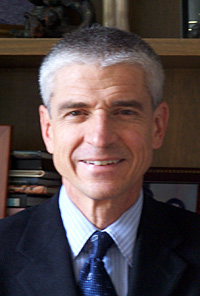A Case Study: Blood in the butchery!
This issue gives us a “blog from the board” by FFI board member Ricardo Mejía as well as a case study entitled “Blood from the Butchery” for your review, considering and commentary.
Yours in Practice,
The Practitioner
His father gave him a pig. This gift plus a knife he had made as a butcher. He was just 16. That happened in 1879, a time when entrepreneurship was not a topic of conversation — much less something to be taught.
That’s how Pleasant Valley Packing Company (PVC), a processing plant and trading company located in a small town in Pennsylvania, U.S., was started. Besides being the town butchery, it was the source of income to support the founder’s 10 children. In those days, the children “either helped around the house or helped in the business.” They had to do some task or chore other than go to school. They learned about entrepreneurship in a natural way.
At 77, John Clemens decided to retire. He left the production plant to his 10 children and sold the trading company to two of them.
Entrepreneurs are characterized by their ability to overcome vicissitudes. Just after the Second World War and while the company was experiencing one of its best moments, a fire destroyed the factory. The brothers had to start the reconstruction, but there was something more important to restore — Europe. The shortage of iron, cement and other materials didn’t let them rebuild at the necessary speed.
Adversity is an opportunity for an entrepreneur. The two brothers, owners of the trading company, fearing that the slow pace of reconstruction would force their clients to change suppliers, invited two other brothers to buy Hatfield Packing Company (HPC), the plant of one of their competitors.
They agreed that HPC would absorb the other two companies. The shares belonging to the six brothers that only participated in VPC would not have voting rights, and the four brothers who owned HPC would each have one fourth of the voting rights.
The company began a steady growth. Sales were duplicated every four to six years and the payroll grew at the same pace. However, they made a small mistake. A century later the family still applied the motto: “Either you work around the house or you work in the business.” They had not yet learned to go from a business with family members managing day-to-day operations to a business with family supervision and professional management.
At the end of the last century, the company had 180 shareholders who were heirs of the six brothers who didn’t have voting power, and 24 who were descendants of the four brothers with voting rights. Twelve of them worked in the company, and four were members of the board of directors.
Unable to distinguish between employee, board member and shareholder roles, the company found that the decision making process had become impossible. The company began to stagnate. From 1988 to 1998, the profits went from 4% over sales to 2% and although large investments in equipment were being made, the company didn’t take off.
To facilitate the decision making process it was agreed that each of the four families would create a trust and vote in blocks to speed up decisions.
Soon they began to face important discussions.
- Could they guarantee a job to any heir who wanted to work in the company?
- Was it time to look for employees outside the family, whose experience could help find a new course?
- Was the family interested in having a firm managed mostly by family members or was it time to think of a family business professionally managed?
Phil Clemens had several sleepless nights. When they handed him the financial statements for the first quarter, he thought, “If we do not change the course, the thriving company founded by our grandfather will end up “butchered.” An apt reference, considering it was a pork processing plant!
After working all his life in the company, Phil was named CEO by the family in 1995. Three years later he resigned, due the impossibility of managing a company in which more than 200 family-shareholders, most of whom had no working relationship with the company, wanted to share their opinion on every day decisions. The family begged Phil not to leave.
In 1999 Phil and his cousin Butch went to a Business Seminar sponsored by Ernst & Young. There, they met James B.Wood, who was presenting his book, The Next Level. They hired him to make a diagnosis.
Wood looked at the company’s numbers and talked with some family members and employees. Then he proposed three alternatives to Phil and Butch:
- Do nothing.
- Sell the company.
- Make drastic changes.
The family members utterly refused to sell the company. It had been founded by their grandfather and had supported them for more than 100 years. If drastic changes had to be taken, they were ready to proceed. Phil, who had been in the company for 28 years and was well aware of the difficulties family firms faced in terms of decision-making, made a tough and simple proposal:
- Two family members that were on the Board had to give up their seats and would be replaced by external members, establishing a majority of independent directors.
- Family members on the board had to resign their positions in the company.
- Four other relatives with senior positions had to resign.
- The company would no longer guarantee heirs a job; in the event of future vacancies, heirs had to compete with internal and external candidates.
Blood was shed in the butchery!
In 2000, after the changes were made, the family hired Wood as executive vice president and promoted David Budnick, who had been in the business for 16 years, to financial vice president.
Did the company improve?
- The annual growth in sales went from 4.6% in the 1988 to 2000 period, to 5.8% in the 2000 to 2012 period.
- The operating income, which had increased at an annual average of 5% in the 12 years prior to the changes, grew by 11.5% annually between 2000 and 2012.
- Free cash flow went from decreasing at a rate of -2.2% to having a 9% growth.
By clinging to the idea that there is no one better than family to manage their own company, families miss out on external talent and neglect the importance of diversity. Today the family is grateful for the changes Phil introduced, but do not forget that family blood was shed in the process.
About the contributor
 Ricardo Mejía’s firm, Ricardo Mejía Cano Consultores Empresariales, is based in Colombia. A member of the FFI board of directors, Ricardo holds Certificates in Family Business and Family Wealth Advising. He will be co-presenting “Alignment of the Three Governing Bodies in Family Businesss” at the FFI Research and Education Symposium in London. Ricardo can be reached at consultor@ricardomejiacano.com.
Ricardo Mejía’s firm, Ricardo Mejía Cano Consultores Empresariales, is based in Colombia. A member of the FFI board of directors, Ricardo holds Certificates in Family Business and Family Wealth Advising. He will be co-presenting “Alignment of the Three Governing Bodies in Family Businesss” at the FFI Research and Education Symposium in London. Ricardo can be reached at consultor@ricardomejiacano.com.




